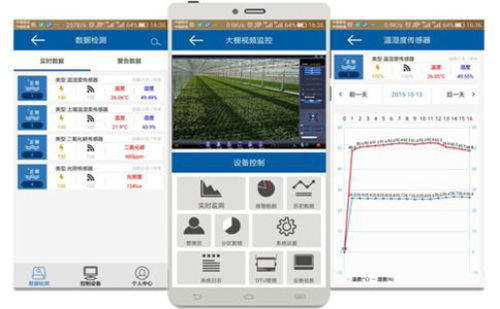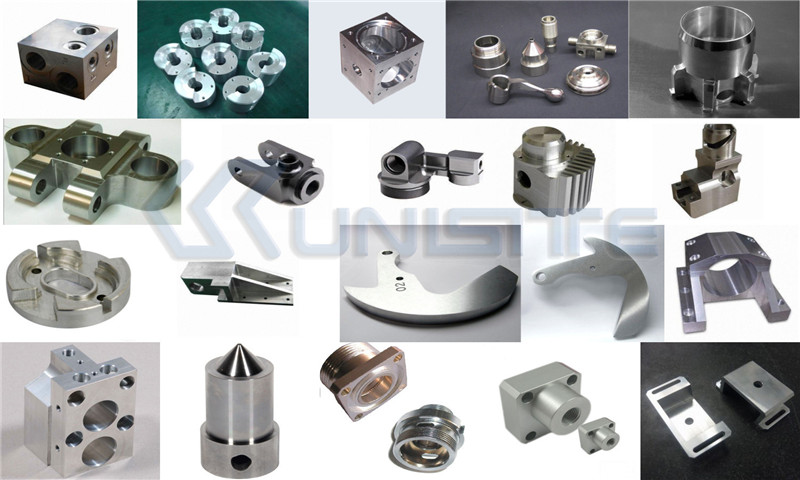Introduction: After the development of modern agriculture, agricultural production or managers only need a mobile phone, and they can get vegetables in greenhouses. They can use the mouse to browse agricultural techniques at any time. They can easily realize the trade of agricultural products by just one phone call. Both are the chain reactions brought about by the progress of agricultural IoT technology. In modern agricultural production, the Internet of Things mainly shows the positive impact on modern agricultural production from the following aspects. Source: Chengdu Xinxin Electronic Technology Co., Ltd.
In modern CNC systems, end-to-end component design is highly automated using computer-aided design (CAD) and computer-aided manufacturing (CAM) programs. The programs produce a computer file that is interpreted to extract the commands needed to operate a particular machine by use of a post processor, and then loaded into the CNC machines for production. Since any particular component might require the use of a number of different tools – drills, saws, etc. – modern machines often combine multiple tools into a single "cell". In other installations, a number of different machines are used with an external controller and human or robotic operators that move the component from machine to machine. In either case, the series of steps needed to produce any part is highly automated and produces a part that closely matches the original CAD design
Computer Numeric Control (CNC) is the automation of machine tools that are operated by precisely programmed commands encoded on a storage medium (computer command module, usually located on the device, see picture right-->) as opposed to controlled manually by hand wheels or levers, or mechanically automated by cams alone. Most NC today is computer (or computerized) numerical control (CNC), in which computers play an integral part of the control.
The photos of our related CNC Machining Parts:
MAIN PARTICULARS
Material
Aluminum, Stainless steel, Carbon steel, Alloy steel, Brass, Casting iron, Bronze, Powder metal, Plastic
Standard
ASTM, ASME, DIN, JIS, ISO, BS, API, EN
Certificate
ISO9001, BV
Processing
CNC turning, CNC turning and milling compound processing, 3/4/5 axis CNC milling
Finishing surface
Machined surface with tectyl891, anodize, polishing, nickel plating, zinc plating and chrome plating, oxidation, powder coating, painting, etc.
Inspection
material, construction, dimension, heat treatment, hardness, NDT
Quality
ISO9001, BV, control production
CNC Machining is the metals to make use of CNC machine tool processing, is refers to the use of nc Machining tools for processing.Index of the CNC control machine tool controlled by nc programming language, usually in the form of G code.Nc machining G code what language told CNC machine tool The cartesian coordinates, and controls the tool feed rate and spindle speed, as well as the tool changer, coolant, etc.Nc machining relative manual processing has great advantages, such as CNC machining to produce parts very precise and repeatability.Nc machining process can produce manual can't complete with complex shape parts.Nc machining technology has been widely adopted, most of the machining with CNC processing ability, the typical machining workshop, the most common way of nc machining with CNC milling, CNC and CNC EDM wire cutting, EDM wire cutting cut).For nc milling tool is called numerical control milling machine or numerical control machining center.To carry on the lathe of numerical control turning processing is called numerical control lathe work center.Can manual programming nc machining G code, but usually machining using CAM (computer-aided manufacturing) software automatically read CAD (computer-aided design) files and generate G code program, control of CNC machine tool.Leading technology of numerical control machine tool brands have Hass, DMG (Deckel Maho Gildemeister), Mazak, Mori Seiki, Fadal and Wasino.
Cnc Machining Parts,Cnc Machining Oem Parts,Cnc Machined Products,CNC Machining Shinvast Industry Ltd , http://www.shinvastindustry.com
First, improve efficiency, change development methods:
In traditional agriculture, people have limited access to farmland information, mainly through manual measurements. The acquisition process requires a lot of manpower. By using wireless sensor networks in smart agricultural applications, human consumption and farmland environment can be effectively reduced. Impact, access to crop environment and crop information.
In the application of smart agriculture, a large number of sensor nodes constitute a series of monitoring networks with different functions. Collecting information through various sensors can help agricultural workers find problems in a timely manner and accurately capture the location of the problem. As a result, agriculture has gradually shifted from a manpower-centered, production model that relied on isolated machinery to a production model centered on information and software. This has led to the widespread use of various automated, intelligent, remote-controlled production equipment and promoted agriculture. The transformation of development methods.
Smart agriculture has led to the diversified development of the rural economy. Through the painstaking development of the past two years, the integrated development of agricultural product processing, modern agricultural marketing, and ecological tourism in most agricultural demonstration parks in China has taken shape. Practice has proved that the application and promotion of cutting-edge technologies such as the Internet of Things have enabled the informationization, automation, precision, and intelligence of agricultural production and management. The application of intelligent agriculture is playing a pivotal role in the process of leading modern agriculture into the information superhighway. Chengdu Xinxin Electronic Technology Co., Ltd. is making its due contributions and efforts for the development of China's agricultural internet of things.
Second, smart agriculture helps green development:
Relevant data show that agricultural irrigation is a large water user in China and its water consumption accounts for about 70% of the total water consumption. However, for a long time, due to backward technology and management, the water used for irrigation has been very serious. The utilization rate of agricultural irrigation water is only 40%. According to the monitoring of soil moisture information, real-time control of irrigation timing and water, can effectively improve the efficiency of water use. The manual measurement of public sentiment, not only consumes a lot of manpower, but can not do real-time monitoring.
The application of IoT agricultural intelligence makes monitoring and management in agricultural cultivation no longer limited by time and space. According to detailed data collected by greenhouses or other micro-sensors for planting areas, clicking on the mobile phone screen can be targeted for remotely controlled water-saving irrigation and fertilization. Field facilities such as carbon dioxide, water pumps, fans. In addition, real-time remote monitoring of water-saving irrigation and reclamation can be realized.
To sum up, continuous online monitoring of soil moisture content and automatic control of farmland water-saving irrigation not only increase the utilization rate of irrigation water, relieve the increasingly tense contradiction of water resources in China, but also provide a good growth environment for crop growth. It is understood that the IoT agricultural management platform can be divided into seven systems: precision agricultural production management system, agricultural product quality traceability system, agricultural expert service system, agricultural product online trading platform, agricultural information push system, agricultural information sharing system, and agricultural product logistics distribution system. In the future, the “green industry chain†built around the system will enable modern agriculture to move toward green and sustainable direction.
Third, the Internet of Things shows the catalyst for the transformation of traditional agriculture:
China has a large population, of which about half of the population live in rural areas. The demand for information technology, especially smart agriculture, is huge. Through the application of smart agriculture, the differences between urban and rural areas, developed and developed regions can be reduced, which is conducive to the balanced development of the country's society and economy. At the same time, it can also achieve the transformation of traditional agriculture to modern agriculture, effectively increase the comprehensive agricultural production capacity, strengthen the quality and safety management of agricultural products, increase the quality and safety of agricultural products, and increase the degree of agricultural industrialization.
At the same time, the establishment of an online agricultural technology station enables local farmers to access the relevant agricultural consultation, agricultural product trade, production data exchange, expert consultation, rural employment, and farmer entertainment through the Internet. Farmers can not only conduct on-line consultations on issues of concern, timely access to answers from experts and other companies, but also rely on New Vision, Internet video, telephone radio, and broadband, text messaging and other carriers to listen and watch live broadcasts. Guidance and diagnosis. 
CNC-like systems are now used for any process that can be described as a series of movements and operations. These include laser cutting, welding, friction stir welding, ultrasonic welding, flame and plasma cutting, bending, spinning, hole-punching, pinning, gluing, fabric cutting, sewing, tape and fiber placement, routing, picking and placing, and sawing.